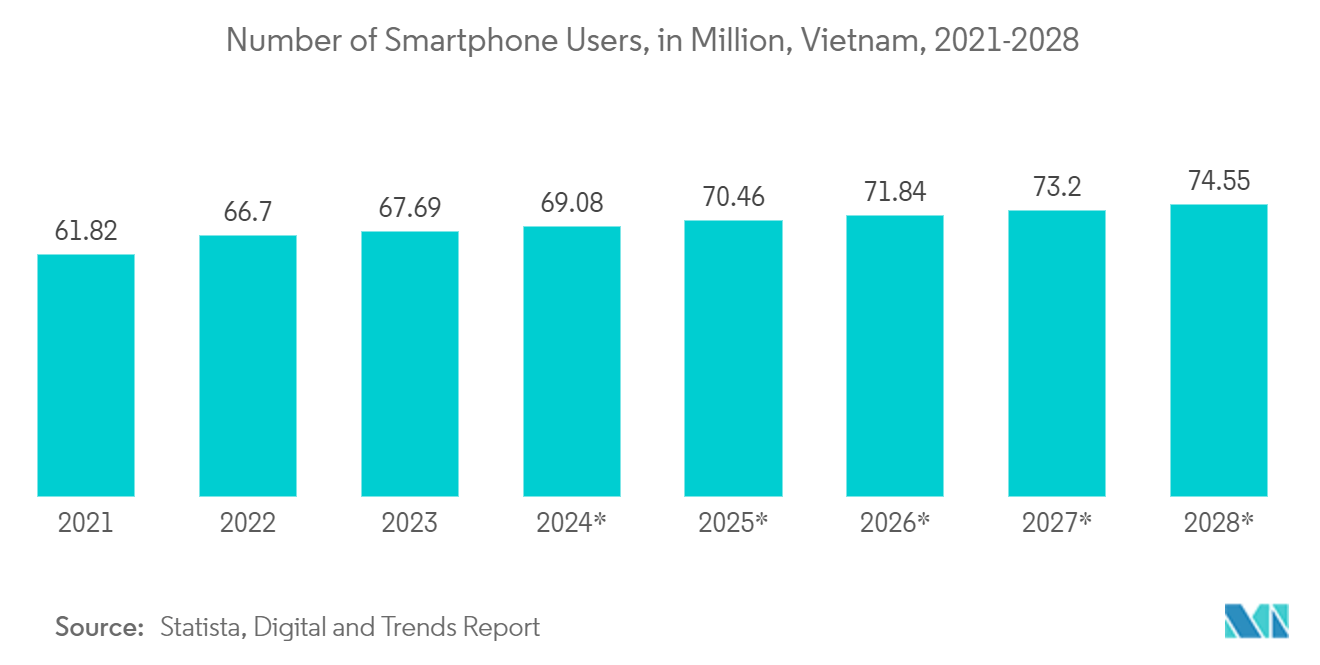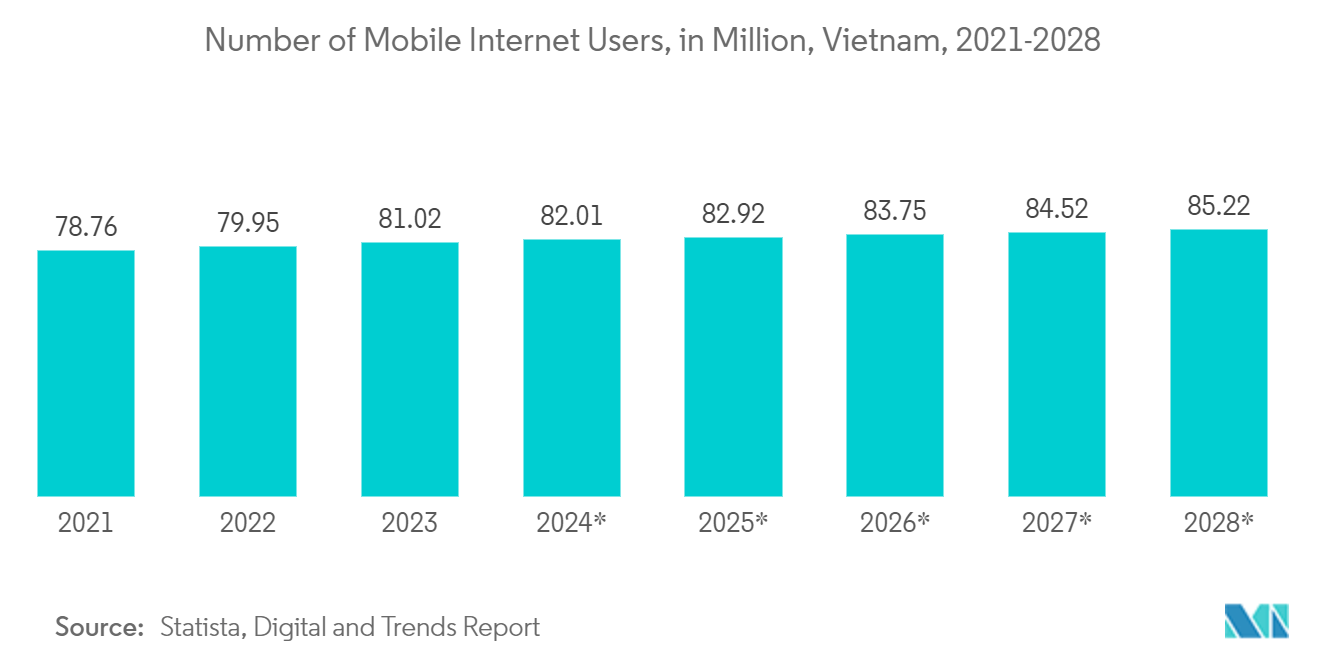Market Trends of Vietnam Data Center Storage Industry
IT & Telecommunication Segment to Hold Major Share in the Market
- In Vietnam, where 5.35% of adults currently use smartphones, there is an ambition to increase this percentage according to the draft National Digital Infrastructure Strategy by 2025. The Telecommunications Department of the Ministry of Information and Communications (MIC) highlights various digital initiatives aimed at promoting smartphone adoption, leading to an increased utilization of data centers and a heightened demand for data center storage products.
- The country has witnessed a rise in mobile data bandwidth speeds, a growing preference for mobile gaming, and an average online presence of around 9 hours on social networking sites. These factors have contributed to an escalation in data consumption over the years, resulting in an augmented demand for data centers and a subsequent increase in the utilization of storage products within these centers.
- The surge in data center workloads is attributable to the escalating demand for enhanced application performance, increased storage requirements, and amplified mobile data usage due to the proliferation of applications and heightened internet usage. Consequently, businesses globally are increasingly adopting cloud data storage, intensifying the demand for data center services. This trend is reflected in the growing utilization of data center storage in the country.
- The launch of the 5G network in 2022 by Viettel marked a revolutionary moment in Vietnam's digital market. The Ministry of Information and Communications (MIC) has been assigned the primary responsibility for accelerating the development of the digital economy, directing and assisting other ministries, agencies, and local governments in implementing the strategy. The continued rise in smartphone usage, coupled with the increasing adoption of 5G networks and growing data traffic, solidifies the dominance of the telecommunications sector. This, in turn, positively impacts the growth of data centers in the country, fostering a heightened need for data storage and consequently increasing the demand for data center storage equipment and elevating market value.

Hybrid Storage Expected To Hold Significant Share
- The combination of on-premises and cloud storage solutions is commonly referred to as data center hybrid storage. This approach capitalizes on the strengths of both environments, offering the flexibility to store and manage data on-premises as well as in the cloud.
- Businesses are increasingly transitioning from public cloud to hybrid IT. This shift is driven by the growth of businesses and the imperative to provide robust customer service. The escalating need for storing and processing substantial volumes of data underscores the importance of hybrid storage solutions.
- As part of the digitalization trend, the adoption of technologies such as big data and the Internet of Things (IoT) by small and medium enterprises (SMEs) has led to a noteworthy uptick in the procurement of all-flash and hybrid array systems.
- In the country's data center market, the migration of enterprise data to cloud platforms is a key driving force. For example, in December 2022, Vietnamese conglomerate Vingroup announced plans to migrate its SAP systems, including supply chain management, enterprise resource planning (ERP), finance management, human capital management (HCM), and manufacturing operations, from on-premise data centers to Google Cloud. This strategic move aims to enhance production capabilities and improve product and service quality. Such initiatives are anticipated to fuel the adoption of hybrid data storage solutions, positively impacting the market.
- The growing prevalence of cloud storage and audio conferencing services has compelled more companies to embrace remote work. This shift has given rise to data centers employing hybrid storage solutions, combining the functionalities of hard drives and SSDs. The utilization of cache for frequently accessed data allows for leveraging the fast access capabilities of SSDs along with the greater storage capacity of hard drives. This innovative approach to hybrid storage addresses the evolving needs of businesses in the era of remote work and digital collaboration.


